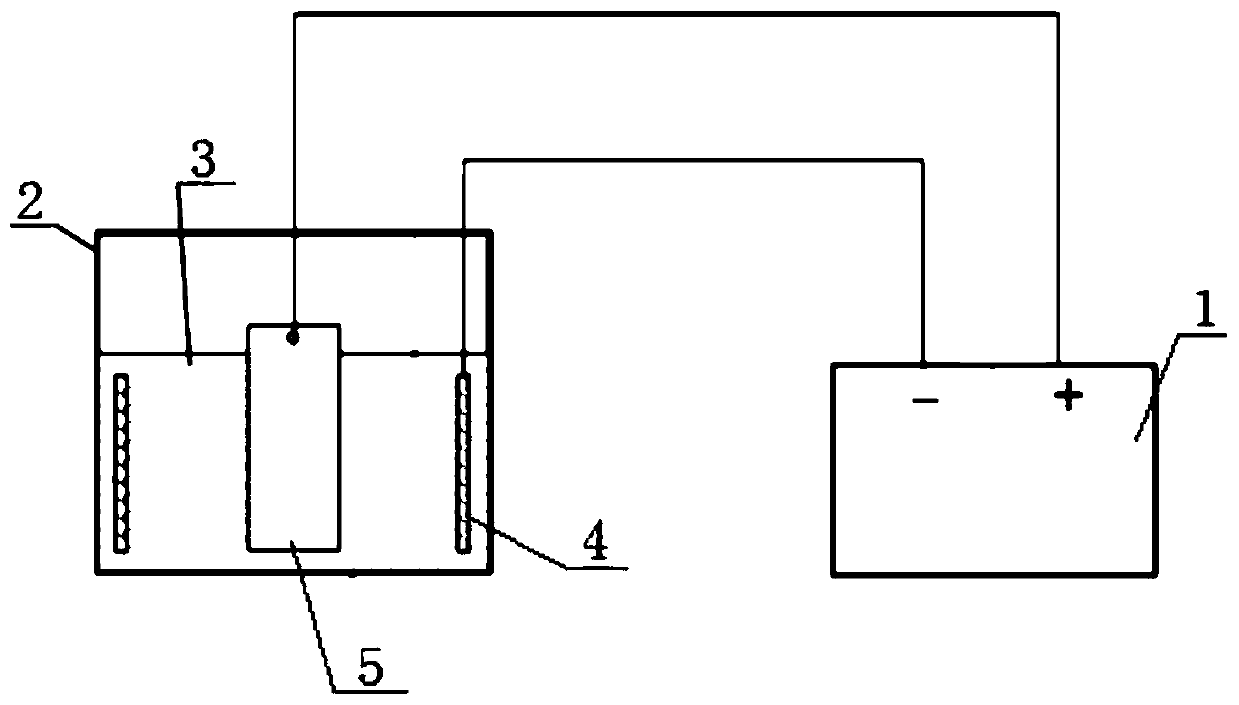Method for extracting inclusions in steel by non-aqueous solution electrolysis
An electrolytic extraction and non-aqueous solution technology, which is applied in the field of metal physics research and non-aqueous solution electrolytic extraction of inclusions in steel, can solve the problem of unstable extraction of inclusions, small-sized inclusions that cannot be accurately evaluated, unstable inclusions, etc. question
- Summary
- Abstract
- Description
- Claims
- Application Information
AI Technical Summary
Problems solved by technology
Method used
Image
Examples
Embodiment
[0034] Example: Extraction of carbides in H13 steel by electrolysis of non-aqueous solution
[0035] Sample preparation: Cut the annealed H13 steel into thin slices of 20×40×5mm, and then polish it with sandpaper until the surface is smooth. After polishing, clean it with absolute ethanol and dry it.
[0036] Preparation of electrolyte: The composition of the electrolyte is: 4.2g tetramethylammonium chloride + 60g acetylacetone + 9g ammonium thiocyanate + 526.8g anhydrous methanol. Pour each substance into a beaker according to the required ratio and stir evenly with a glass rod.
[0037] Electrolysis process: see appendix figure 1 , the electrolysis workstation for non-aqueous solution electrolytic extraction of inclusions in steel includes a DC power supply 1, an electrolytic cell 2, the above electrolyte 3, and a stainless steel film 4; the stainless steel film is connected to the negative pole of the DC power supply, and the H13 steel sample 5 is connected to the positive...
PUM
| Property | Measurement | Unit |
|---|---|---|
| size | aaaaa | aaaaa |
Abstract
Description
Claims
Application Information
 Login to View More
Login to View More - R&D
- Intellectual Property
- Life Sciences
- Materials
- Tech Scout
- Unparalleled Data Quality
- Higher Quality Content
- 60% Fewer Hallucinations
Browse by: Latest US Patents, China's latest patents, Technical Efficacy Thesaurus, Application Domain, Technology Topic, Popular Technical Reports.
© 2025 PatSnap. All rights reserved.Legal|Privacy policy|Modern Slavery Act Transparency Statement|Sitemap|About US| Contact US: help@patsnap.com



